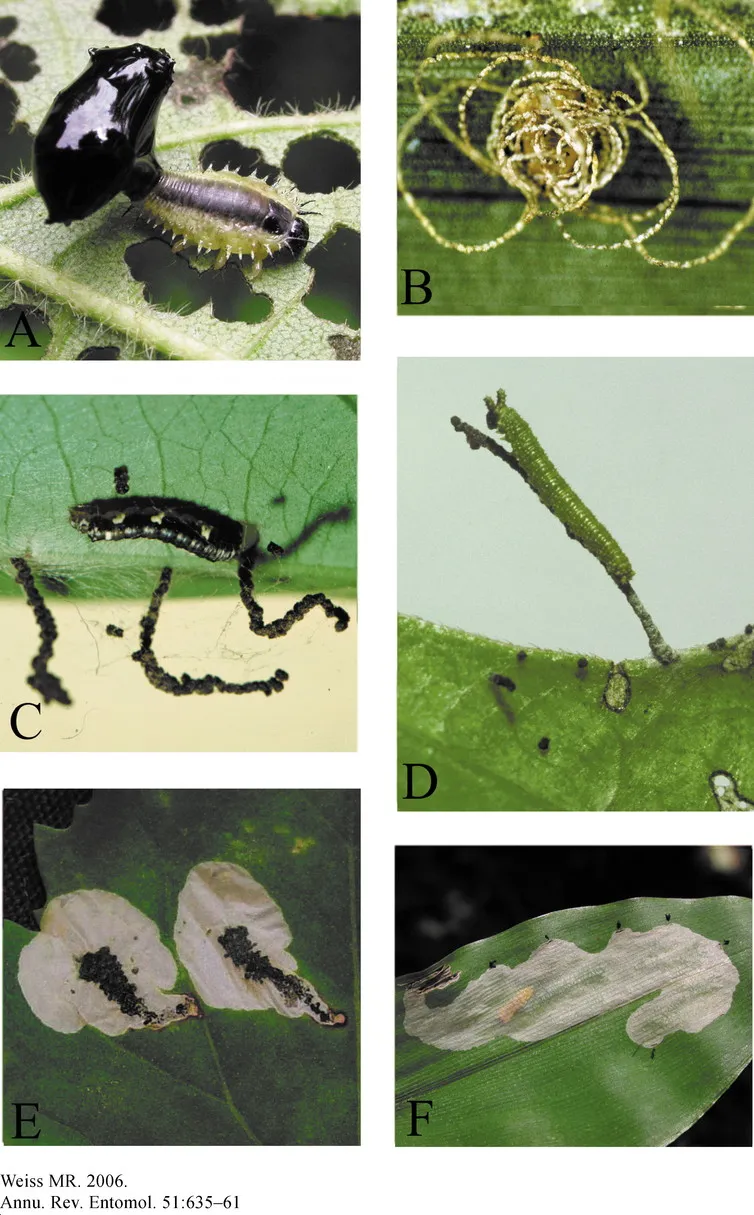How Insect Poop Could Solve All Our Problems
Bugs use their feces for weapons, navigation and gardening. Can we tap into this poop party?
/https://tf-cmsv2-smithsonianmag-media.s3.amazonaws.com/filer/35/cf/35cf5a7d-7a6d-49b8-8675-5370da7109fb/hvtrg9pj-1501758646.jpg)
Insect defecation may not seem like one of the pressing scientific inquiries of our time, but in fact the feces of these wee creatures serves an extraordinary variety of functions in bug and human life.
Unlike most animals, many insect species actually use their excrement. They utilize it as their home, for feeding, in predator-prey interactions, for hygiene, habitat location, shelter construction, for reproduction and physical or chemical defence against natural enemies. (Kids: don’t try this at home.)
For members of our own species, insect feces may even have important and largely unlocked medicinal properties. Let’s take a look.
**********
For some bugs, their excrement provides a home. Larvae of Chelymorpha alternans, commonly known as tortoise beetles, shroud themselves for protection with fecal coverings in the form of coatings, fecal cases or fecal shields.
For others, it’s a deterrent to enemies. The pine weevil (Hylobius abietis) actually deposit feces adjacent to each of its egg as anti-feedants.
Insect waste also plays an important role in species reproduction, as it may affect mate attraction, parental care and even paternity assurance. For example, virgin boring beetles, Hylotrupes bajulus, use fecal volatiles to meet their partners, increasing the opportunity to mate.
Cockroaches, bugs notorious for their chutzpah and for thriving in dirty environments, use the personal scent of their feces to locate and return to resting sites.
This is actually useful news for citydwellers trying to keep their houses cockroach free: track down roach droppings (little black or brown specs that look like a pepper flake), and you’ll find out where the roaches are congregating.

**********
Just as farmers use cow manure as fertilizer, ants spread their feces around to cultivate a garden of fungi for munching on. Fungi evidently thrive on the chewed-up leaves that ants defecate. It’s the circle of life in action.
Insects aren’t the only ones who use bug excrement – we humans do, too. The feces of silkworm (Bombyx mori) have pharmacological properties that give it analgesic, anti-pyretic and anti-inflammatory applications in herbal medicine.
Termites, Coptotermes formosanus, employ feces to build secure homes by mixing poop into the wall of the nest. These wood-eaters harbour a diverse gut microbiome that assists in digestion of cellulose in their diet, and a 2013 study showed that this bacterial community provides the termites with a natural antimicrobial that averts pathogens.
A prior study, from 2000, had previously showed that the bacteria isolated from the termites, Neotermes castaneus and Kalotermes flavicollis, produces centrin, a protein linked to cell division. This protein can aid researchers in understanding its role in the runaway cell division that occurs in cancers, leading some scientists to believe the centrin could be a target for anticancer drugs.
A number of studies have also observed that the black garden ant, Lasius niger, creates unique defecation zone within their nests. The ants keep most waste – such as dead members of the colony, debris from nest material and food scraps outside – but defecate inside, usually in the corner of their chamber.
You may prefer a bathroom with a flush toilet, but some insects can thrive in noisome environments where the pathogen load in the surrounding is relatively high. No pathogens can harm them. Indeed, the indigenous microorganisms associated with insect faeces may actually defend some species against potential new pathogens.
A recent study shows that the larval feces of the Mediterranean flour moth, Ephestia kuehniella, for example, exhibits antimicrobial activity against a broad spectrum of bacteria.
**********
This has potentially interesting consequences for medicine. The lack of new antibiotics and multi-drug resistant infections are making doctors and patients anxious, and there’s some fear of an antibiotic apocalypse. The anti-pathogenic properties of insect faeces may prove useful to discover new antimicrobials and probiotics.
But don’t start adding bug-poo powder to your morning smoothie just yet. Compounds found in the feces of some bugs – including roaches like Periplaneta americana and silverfishes like Lepisma saccharina – can produce allergic reactions in some people, and even cause asthma.
Given that bug feces can serve as everything from a bug babysitter to a human allergen, the realm of bacterial community of insect is an important area of study by entomologists, evolutionary and molecular biologists. Their research may even lead to innovations in antimicrobial properties that can succor in the imminent fearsome post-antibiotic era.
Reports say antimicrobial resistance will kill 300 million people and cost the global economy of $100 trillion by 2050. Perhaps a little defecation could help?
This article was originally published on The Conversation.
Prayan Pokharel, Doctoral Student in Institute for Insect Biotechnology, University of Giessen